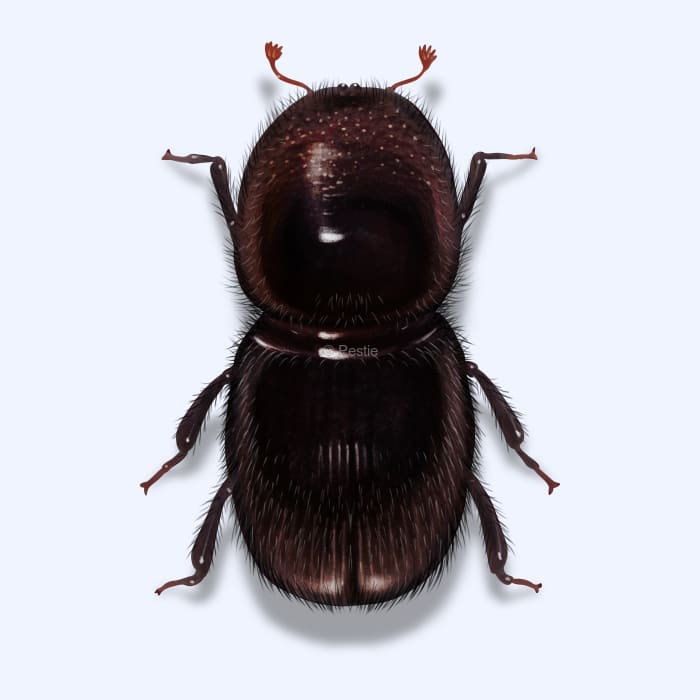How to identify and get rid of ambrosia beetles

Don’t get bored with ambrosia beetles
Have you been noticing holes in your favorite trees, like someone used a shotgun on the trunk? You aren’t dealing with a gunman, but instead, you’re up against tiny ambrosia beetles.
These small beetles are a big problem for stressed or weakened trees, where they bore into the wood to create galleries for their eggs. They don’t eat the wood, but instead, they introduce a fungus that feeds on the wood, and the beetles eat the fungus. While ambrosia beetles are small, the damage they cause can be significant, making early detection and proper tree care essential.
Ambrosia beetles have a unique life history. After boring into a tree, they introduce a fungus, which serves as the food for their larvae. The fungus grows in the tunnels they create, and this symbiotic relationship allows both of them to grow and expand their range.
How to identify ambrosia beetles
Ambrosia can often be hard to spot and even harder to identify. However, the signs of the presence are easier for you to notice. Look for perfectly round holes in the trunks and branches of trees and wooden structures. These holes are a clear sign of an infestation, especially if you notice small tubes of sawdust, called frass tubes, sticking out from the bark.
The beetles are small, cylindrical, and usually brown.
How big are ambrosia beetles?
These beetles are only 1/8 to ¼ inch long.
Where do ambrosia beetles live?
They are found throughout the United States, particularly in regions with high humidity and where hardwood trees are common. Ambrosia beetles are most often found in stressed or dying trees, particularly in orchards or wooded areas. They can also be found in wooden structures or firewood near homes.
How to get rid of ambrosia beetles
Ambrosia beetles are typically not a big problem in homes. The biggest concern is for the trees in your yard. Here are a couple of strategies to manage ambrosia beetles around your property:
- Prune and remove infested branches – If you start to see holes in branches of your trees, prune them and destroy them to reduce the population
- Keep trees healthy – Ambrosia beetles are going to target sick and weakened trees. Proper tree maintenance and care will give your trees a better chance of surviving.
Treat ambrosia beetles with Pestie
If you're still having trouble keeping ambrosia beetles away, the best option is to use a pro-grade, effective pest control solution like Pestie.
Pestie is a do-it-yourself pest control solution that's specially designed to keep ambrosia beetles and other pests away from your home.
With Pestie, you can rest easy knowing that your living space is protected and free of creepy crawlies. And the best part? It's designed for people, pets, and the planet, so you can say goodbye to harsh chemicals and hello to peace of mind!
- Save hundreds compared to traditional annual pest plans
- People, pet, and planet-friendly
- Pro-grade customized formulas
Quick facts
- Scientific name
Subfamilies - Scolytinae and Platypodinae
- Other common names
Pinhole Borers
- Colors
Dark brown
- Life span
3-9 weeks
- Diet
Ambrosia fungus
How dangerous are Ambrosia Beetles?
Low danger risk
No, ambrosia beetles aren’t dangerous to people or pets. However, they can cause damage to trees and wooden structures.
One species of ambrosia beetle is the only species of beetle to be eusocial, just like honeybees, termites, and ants.








